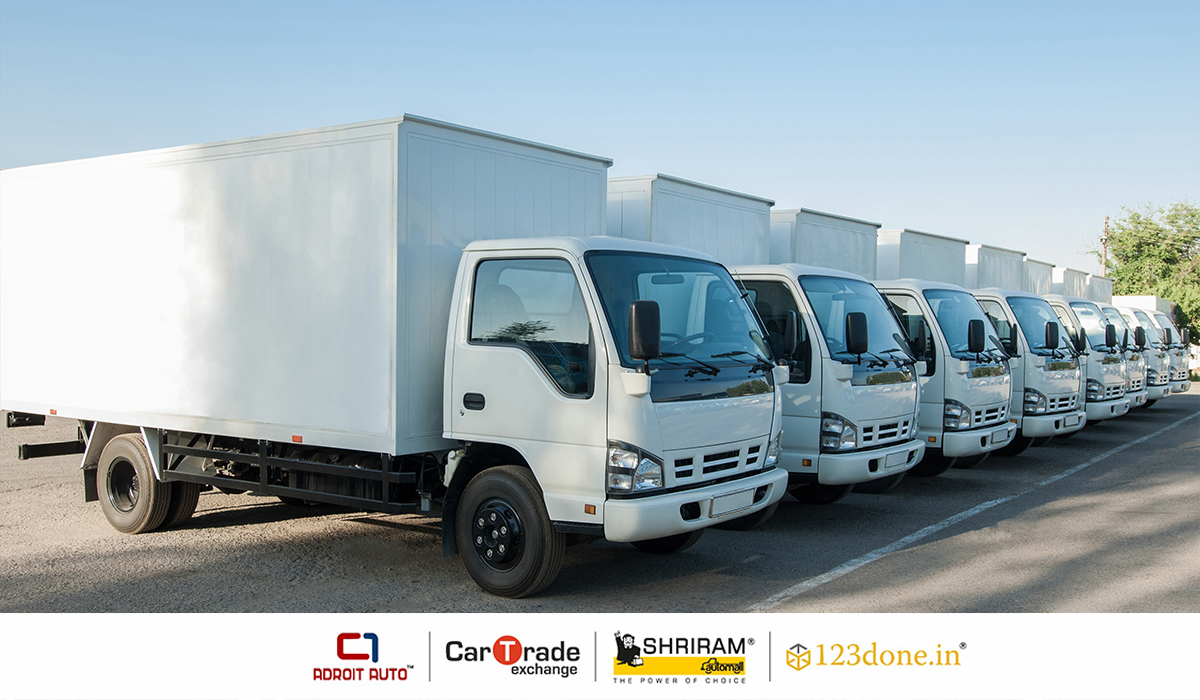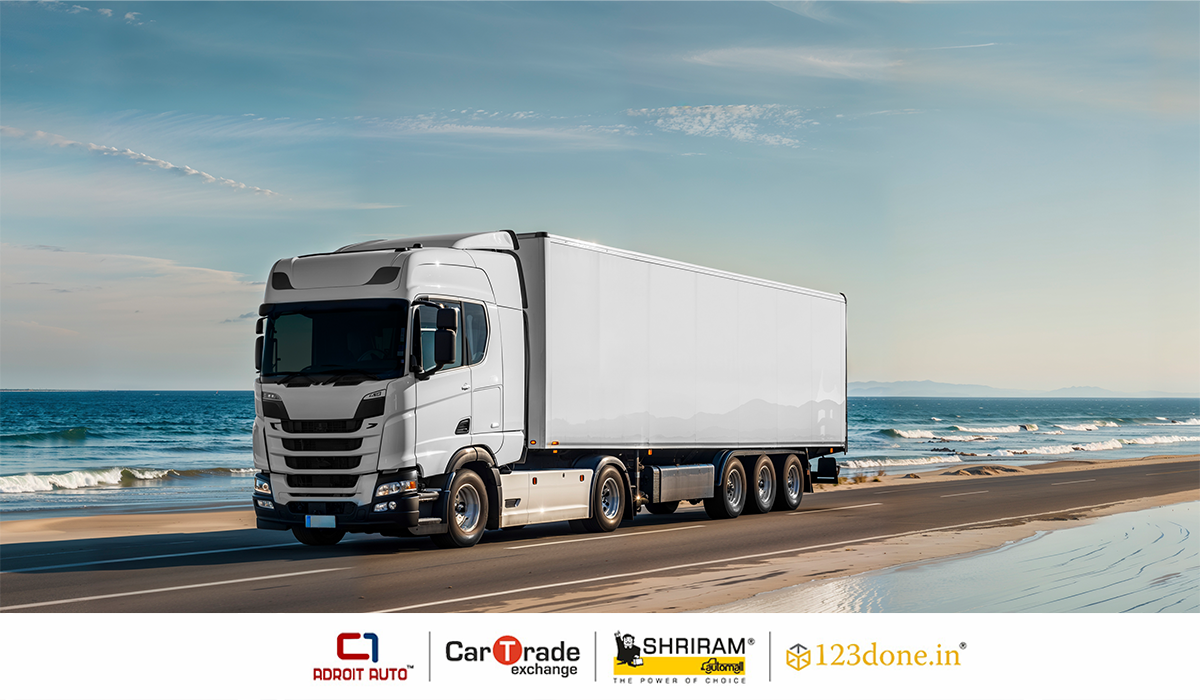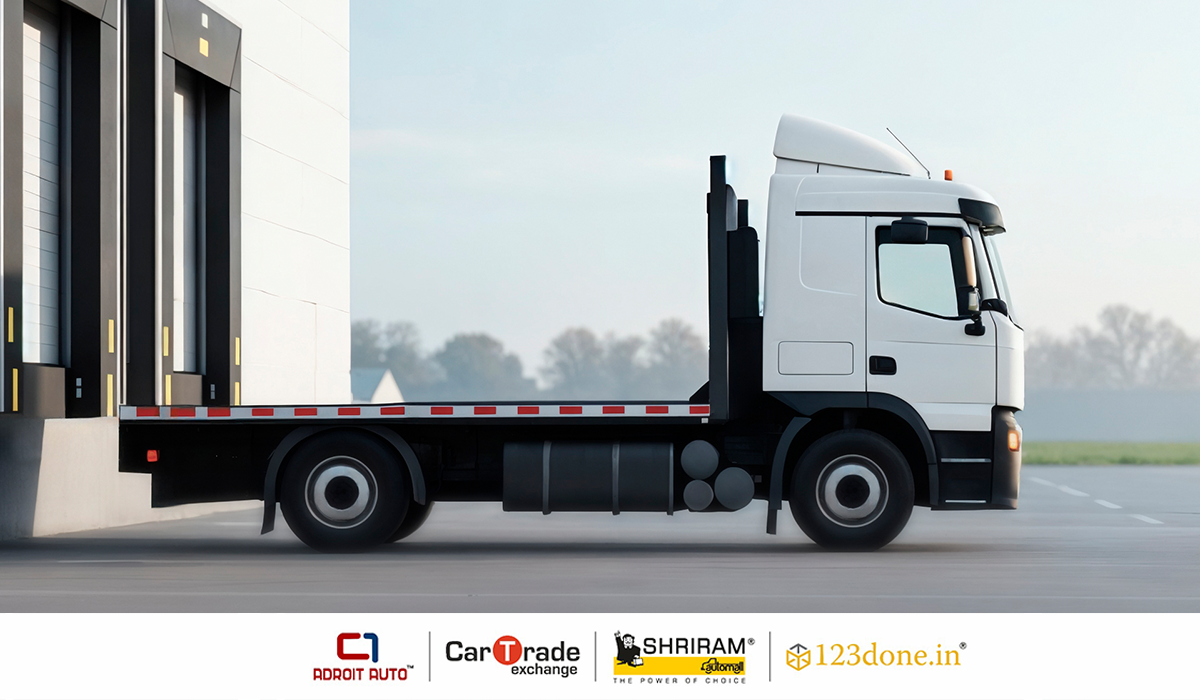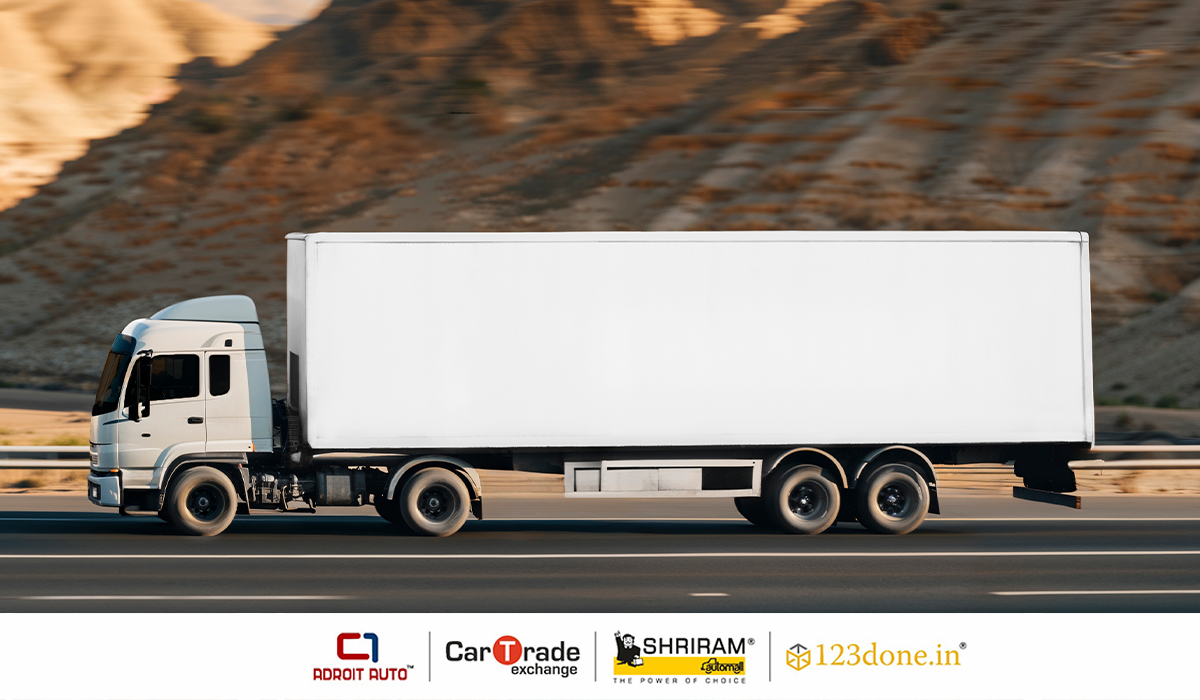What Is a Straight Truck? Types, Features & Importance to Modern Transport

Ever wondered about the hidden gem of the transportation world? The vehicle that delivers your furniture and appliances efficiently, yes, we are talking about a Straight Truck. A straight truck is a commercial vehicle with its cab attached to the cargo. The cab is the front part where the driver sits and controls the truck, while the cargo is the rear section used to store or transport goods and equipment.
Think of a straight truck as one long vehicle in which the front part where the driver sits is connected to the goods carrier part. This commercial vehicle is one long single unit best suited for deliveries.
In this blog, we will dive deep into everything that you need to know about what is a Straight truck — their types, uses, features and why are they crucial to modern transport.
What is a Straight Truck?
As the name rightly suggests, Straight truck is a straight long vehicle with one body. It is a commercial vehicle more like a tractor-trailer fixed in one position. In easier words, all the axels of this vehicle are attached to a single frame. However, it resembles a tractor truck, its most distinguishing aspect is that unlike a tractor, a straight truck cannot be separated from its front. It is one single unit, mainly used for moving house supplies, boxes, or appliances.
Straight truck is basically an umbrella term used for all medium-heavy trucks. Many people often confuse it with a semi-truck, but the cargo of a semi-truck can easily be detached from the rest of its body, whereas a straight truck remains as one.
According to the Federal Motor Carrier Safety Administration (FMCSA), a straight truck is a single cab and body vehicle which is one-half the capacity and size of a tractor-trailer. It’s different from a tractor-trailer since the cab is a single unit with a trailer.
Key Points in Simple Terms to Understand Straight Trucks:
-
One solid body/frame (not separate parts like in trailers)
-
Used for local deliveries (furniture, goods, etc.)
-
Easier to drive than big trucks with trailers
-
Can be equipped with lift gates for easier loading
Types of Straight Trucks and their Uses
For suiting distinct needs and requirements, there are different types of straight trucks that are available. They come in all sizes, weighs differently, and are used for certain fixed purposes.
Let us have a look at the types of straight trucks and their working:
Box Truck and Uses
Box truck is a straight often referred as a Cube Van, Box Van, and a Cube Truck. These are considered to be more reliable and compact for carrying goods since they are fuel efficient and their maintenance is easier. They have a box shaped cargo area mainly used for appliances that needs protection from certain environmental elements.

Example- Delivery vans or movers.
Refrigerated Truck and Uses
Refrigerated truck is a straight truck which is often referred as a reefer. As its name suggests. Refrigerated truck has a built-in cooling system to transport perishable goods from one place to another. Goods that need a certain temperature to be stored are kept in the reefer so that it doesn’t get spoiled. Refrigerated trucks are used to transport food, or pharmaceuticals generally.

Example- Grocery delivery or ice-cream truck.
Flatbed Truck and Uses
This straight truck has a flat and open cargo area instead of a closed box. The items that are heavy and do not need any protection are transported through Flatbed trucks. They are best-suited for moving unconventional or oversized items such as industry machinery or construction equipment.

Example- Trucks carrying steel rods, cement pipes, or machinery to construction sites.
Dump Truck and Uses
Dump truck is equipped with hydraulic mechanism consisting of tilt-back bed which is used to unload the inner content onto the ground. It allows easy dumping at an angle which is best for hauling loose material like sand, gavel, debris, garbage, etc. The major area of work for dump trucks are the construction sites.

Example- Trucks delivering sand or crushed stone to construction sites or removing debris from road work areas.
Tow Truck
Tow truck is a straight truck which is equipped with towing equipment. It is meant to be used for vehicle recovery or transport. Whenever a vehicle which is disabled or has been into an accident, needs to be transported, recovered or moved, tow truck is used. Its towing mechanism picks up a vehicle from the front and carries it to the destination.

Example- A tow truck lifting a broken-down car from the roadside or towing a scooter from a no-parking zone
Dry Van Truck
Dry Van truck is a straight truck that has a fully enclosed cargo area for protecting the goods from weather or theft. It is used for transporting non-perishable, dry items such as electronics, packaged items or clothes.

Example- A truck delivering TVs, furniture, or cartons of packaged snacks to retail stores or warehouses.
Features of Straight Trucks
When it comes to local logistics or mid-range transport, straight trucks are the quiet heroes of the road. From delivering household goods to carrying raw materials across towns, these trucks are known for their versatility.
Here's a closer look at the features that make straight trucks a preferred choice for many businesses:
1. Single, Integrated Frame
A straight truck is built on a single, continuous chassis, meaning the driver’s cab and the cargo area are part of the same structure. This makes it easier to drive and maneuver, especially in cities or narrow roads.
2. Easier to Operate
Unlike tractor-trailers, which require special licensing and experience, most straight trucks can be driven with a standard commercial license. Their size, turning radius, and handling are closer to that of a large van than a full-size truck.
3. Versatile Cargo Options
Straight trucks come in many forms—box trucks, refrigerated trucks, flatbeds, dump trucks, and more. This means they can be customized for everything from food delivery to heavy-duty construction.
Explore the different types of straight trucks and their uses.
4. Time-Saving Loading and Unloading
Thanks to their low bed height and boxy design, loading goods into a straight truck is faster and more convenient—especially important for logistics companies making multiple stops.
5. Better Fuel Efficiency (Compared to Larger Rigs)
Because straight trucks are more compact and lighter than articulated vehicles, they often offer better mileage—which can lead to lower transport costs in the long run.
6. Ideal for Short to Mid-Range Trips
While not built for cross-country hauls, straight trucks are perfect for daily or regional routes, making them a staple in last-mile logistics, construction, and retail distribution.
Why Straight Trucks are Crucial?
Transporting goods is not as easy as it may sound. Having the right equipment is of utmost importance. For this, straight trucks come in handy due to their efficiency and versality. One of the biggest advantages of using a straight truck is its manoeuvrability. They can easily navigate through narrow streets and go to hard-to-get places easily. This makes straight trucks the best goods transporting commercial vehicles in urban locations or areas. These trucks also offer enhanced security for your cargo, as the cargo part is enclosed, it ensures that your goods remain protected from weather conditions, tempering or even theft.
Many Straight trucks today come with advanced technology, having GPS tracking systems and onboard cameras. These tools help improve efficiency by providing real-time fleet monitoring. Using a straight truck gives you greater control over your transportation operations as you can opt out of relying on third-party carriers or shipping services. This also allows you to have more flexibility and increase customer demand.
Conclusion
In a fast-paced world like ours where deliveries and logistics are an intricate part of our daily workings, straight trucks literally do a lot of heavy lifting. Whether you own a small business or just trying to move your goods from one place to another, a straight truck is your solution to everything.
From box trucks and reefers to dumpers and tow trucks, straight trucks come in many forms, each meant to perform a different job. What they all share is a smart, single-body design that makes them easy to drive, safe to operate, and perfectly suited for tight city streets, busy work schedules, and quick turnarounds.
So, from now on if you come across a truck pulling up in your area to lift some furniture or deliver your amazon parcel, take a second look. The everyday workhorse of modern delivery or transportation, and the less appreciated hero of today’s world, a commercial vehicle that helps the cities move, and businesses to thrive— a straight truck!
Frequently Asked Questions (FAQs)
1. What is a straight truck?
A straight truck is a commercial vehicle where the cab and cargo area are built on a single, continuous frame. Unlike semi-trucks, it cannot be detached or separated, making it ideal for local deliveries and mid-range transport.
2. What are the different types of straight trucks?
Common types of straight trucks include box trucks, refrigerated trucks (reefers), flatbed trucks, dump trucks, tow trucks, and dry van trucks. Each is suited for specific tasks such as goods delivery, vehicle towing, or hauling construction material.
3. How is a straight truck different from a semi-truck?
A straight truck has one fixed unit, while a semi-truck consists of a separate cab and trailer. Straight trucks are easier to drive, require less licensing, and are best for short-distance or urban deliveries.
4. What are straight trucks used for?
Straight trucks are used for transporting furniture, appliances, food items, machinery, construction supplies, and even towing broken-down vehicles. They are especially useful in last-mile delivery and city-based logistics.
5. Do you need a special license to drive a straight truck?
In most cases, a standard commercial driver’s license (CDL) is sufficient for driving a straight truck, depending on the size and weight. They are generally easier to operate than articulated trucks.

 Download Our App
Download Our App



